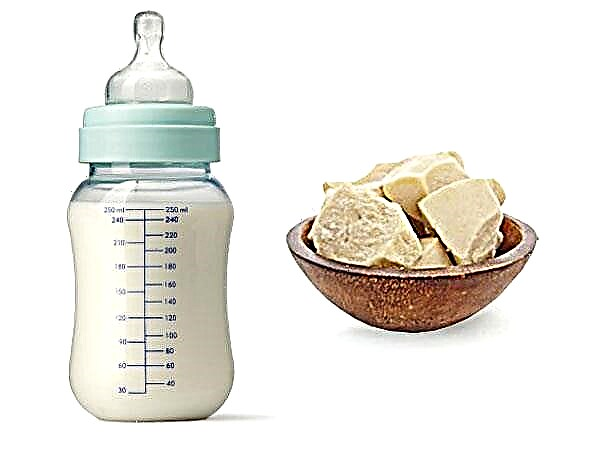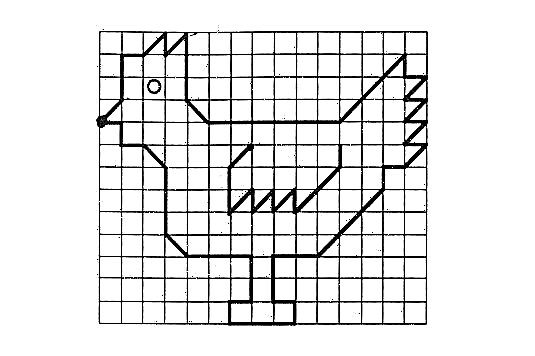The body of modern children began to react more and more actively to various stimuli. Among them, there is an allergy to an antibiotic in a child. To a greater extent, it is hereditary and proceeds with complications.

Antibiotic treatment
Could you be allergic to antibiotics?
There are 2 types of negative reactions: true and pseudo-allergic. In the first case, immunological processes are involved in the disease. The second type is not associated with the production of antibodies and sensitized lymphocytes (which is why it is called a pseudo-disease).
It is not a true allergy that gives a reaction to medicines (as well as food). A sensitive organism can react negatively to various drugs: novocaine, sulfonamides, bromides, mercury and iodine-containing drugs, even to B vitamins. Most often, allergies are manifested by antibiotics.
Reasons for the body's reaction
The main factor highlighted by scientists in the light of this problem is a familial predisposition to allergies. The reaction can be caused not only by the frequent irrational use of drugs - for young children, a single dose is enough for characteristic symptoms to appear.
The genetic nature of pseudo-allergy is not fully understood, although doctors are more likely to blame the drugs themselves for the problem, their properties:
- how well they dissolve in water and fats;
- in what quantity do they contain polysaccharides, proteins and their complex compounds;
- what is the degree of biological activity of the antibiotic.
Note! The physicochemical properties of drugs are predetermined by the composition. Therefore, the baby may be allergic to some medicines, but not to others.
Often, previously tolerated drugs become allergens due to degradation or oxidation, which leads to prolonged storage of drugs in inappropriate conditions (despite the fact that they are not expired).
Predisposing factors for antibiotic allergy are:
- insufficiency of the functions of the excretory systems of a small organism;
- transferred infections;
- gastrointestinal problems.
The latter factor has a particular effect on the oral route of administration of drugs. In this case, antibiotics pose a great danger to young children against the background of the development of dysbiosis and food allergies.
Signs
Clinically, a pseudoallergic reaction in young children manifests itself in different ways:
- local symptoms (urticaria);
- systemically (anaphylactic shock, Quincke's edema).
In terms of severity, the range of the disease is quite wide: from mild manifestations to death. The reaction is classified into 3 groups, depending on the course of the disease and the speed of its development:
- Acute - develops instantly and can occur in any form (local or systemic).

Allergic reaction
- Subacute - will manifest itself within the first day after taking antibiotics. Typical signs are fever, exanthema.
- A protracted, long-term option - the allergy does not make itself felt immediately, usually several days or even weeks pass after the drug is administered.
The latter type of drug reaction leads to the development of allergic vasculitis, serum sickness. Seals are observed in the lymph nodes.
Local symptoms
Rashes on the skin (sometimes mucous membranes) appear almost immediately after taking antibiotics. This species is characterized by the following signs:
- the skin looks like after a nettle burn;
- the rash is itchy;
- in the inflamed areas there is a feeling of heat.
Note! An allergic reaction is often accompanied by fever, fever, agitation, joint pain, heart palpitations, and even loss of consciousness.
Systemic
These types of allergies can be supplemented by local symptoms or be an independent reaction to the treatment of the baby with antibiotics.
Types of acute allergies
| Name | Clinic |
|---|---|
| Quincke's edema | Angioneurotic manifestations spread to the skin, tissue underneath and mucous membranes. They are localized limitedly on the face, capturing individual areas (lips, eyelids, neck, ears), sometimes spreading to the limbs and genitals. There is a rapid increase in swelling. In this case, the skin over the edema does not change. The lesions can become large and deform the affected area. An allergic reaction lasts several hours, less often it stretches for days, then disappears with lightning speed. |
| Anaphylactic shock | Depending on the characteristics of the child's body and the composition of antibiotics, the reaction to the injected drug manifests itself instantly: in fractions of seconds or minutes. Only a number of children experience shock after several hours. Pathology is manifested by the following symptoms: • flushing of the skin; • blue in the face; • pallor of the face; • itchy rash; • shortness of breath; • vomiting. The child shows signs of anxiety and even fear. |
Serious consequences are possible without medical assistance. Anaphylactic shock is especially dangerous, in which the child loses consciousness due to a sharp decrease in blood pressure.

Edema
Diagnostic measures
An allergy that has manifested itself once will make itself felt in the future. This makes it difficult to treat the baby with antibiotics. To identify the causes of pseudo-reactions, an in-depth clinical examination of the child will be required. The purpose of such an event is to identify the nature of the allergy, select drugs for its treatment and determine the list of antibiotics contraindicated for the baby.
Research complex
Diagnostics includes not only determining the level of eosinophils in a general blood test. A whole set of components will be required:
- find out the presence of total immunoglobulin E;
- determine eosinophilic cationic protein;
- if necessary, make a rhinocytogram.
The most important analysis in the complex of measures is histamine. It includes a combination of a DAO enzyme (antagonist) and histamine (a provocateur). These 2 components in the body must "work" in pairs and be in a certain relationship. If there is a failure that caused an allergy, then an increased level of histamine will be observed in the analysis.
Allergy tests
A skin test helps to determine whether a negative reaction to an antibiotic is possible. It is carried out in this way:
- a little antibacterial substance is applied in the forearm;
- the skin is cut with a scarifier.

Allergy tests for medicines
Wait a few minutes and check the result. If this place is swollen, reddened, it is concluded that the antibiotic is not suitable for the child.
The course of the disease in childhood
Young children under one year old tolerate allergies more easily than adolescents and adults. Quincke's edema and anaphylactic shock occur in a small number of babies. Most often, the pathology is local in nature.
Rash as a reaction of the body to an antibiotic
Hives can appear in various forms: papules and blisters. The disease develops rapidly:
- under the influence of the drug, the permeability of the skin capillaries increases;
- the result is limited dermal edema;
- at this place, acutely inflamed multiple elements instantly appear.
The rash is characterized by a mauve skin tone and severe itching. The elements are of various sizes and often merge with each other. Ultimately, the rash rises above the skin as a white patch surrounded by a reddened patch.
Urticaria can be localized anywhere on the body, most often it is observed on the abdomen, back, hips, chest and feet. With extensive lesions, the rash passes to the mucous membranes of the nasopharynx.
What to do for parents
If, after taking the antibiotic, the baby has an allergic reaction, the child should be put to bed on a barrel. It is necessary to ensure the supply of fresh air to the room.
In the case when the child shows signs of allergy almost immediately, the following actions are performed:
- when taking an allergen inside, it is advisable to flush the stomach, if the patient's condition allows;
- when an allergenic medication is instilled into the nose or conjunctival sac, they must be rinsed with water.
Important! For any type of allergy, the child is enterosorbed with activated carbon at the rate of 1 g per kilogram of body weight. This rate can be divided into 2-3 passes, in small doses.

Enterosorbent for allergies
Be sure to give the child an antihistamine (Zirtek, Telfast, Claritin, etc.). If there are ampoules of Suprastin 2% in the first-aid kit, an intramuscular injection is made, typing 0.1-0.15 ml into a syringe for each year of the baby's life.
If the reaction is limited to a rash after antibiotics in a child, and he feels relatively well, home measures can be dispensed with. In case of urticaria with fever, angioedema and other complications, an ambulance should be called.
Diet for allergies
The body's non-immunological response to antibiotics is akin to food allergies. Therefore, after an attack, the baby should be put on a diet to avoid vomiting and diarrhea:
- the first few hours it is better to limit yourself to sweetened tea;
- then a baby up to 12 months can be given a little breast milk or an adapted formula;
- an older child is transferred from solid food to liquid food.
To begin with, they give dairy products - they will help the body restore vitamins and minerals lost as a result of allergic intoxication. A few days later, boiled fish and meat, chopped fruits and vegetables, eggs are introduced into the diet.
Can I cancel the appointment or replace with another
In case of a negative reaction to an antibiotic, its use is immediately stopped in order to prevent further intake of the allergen. The above measures of assistance are taken without fail. The replacement of the drug should be dealt with exclusively by the attending physician, with the confidence that the baby will not be allergic to the new medication.
How to avoid allergies
If the family has relatives suffering from allergies, the child must be immediately put into a risk group. Drug sensitivity may not be hereditary.
When an allergy to food appears, this is already a signal that the body may turn out to be unstable to medications. This predisposition should be reported to the pediatrician, who will make an appropriate mark on the baby's card.
Council. In this case, it is advisable to collect an allergic history in order to know exactly what the child has an allergic reaction to.
Possible complications
If urticaria itself causes local discomfort, then other types of allergies are dangerous complications:
- Quincke's edema, which spreads to the upper respiratory tract, will lead to mechanical asphyxia, accompanied by shortness of breath and cough;
- a swollen tongue prevents the baby from chewing and swallowing food;
- with anaphylactic shock, a syndrome of respiratory and acute vascular insufficiency develops.

The child suffocates
Without timely medical care, the baby loses consciousness. He has convulsions, often ending in death.
Treatment methods for allergic reactions to antibiotics
The question of what to do in a child allergic to antibiotics is discussed with the doctor. It is impossible to treat pathology on your own. With a mild reaction to medications at home, you can get by with antihistamines.
Note. In case of complications, hospitalization will be required in a hospital, where the child will be cleansed of the allergen from the body and prescribed appropriate therapy, which is under the supervision of a doctor.
What Dr. Komarovsky advises
A well-known pediatrician is of the opinion that in most cases the parents themselves are the culprits of an allergic reaction to drugs. Komarovsky advises using antibiotics in the treatment of children as little as possible.
The doctor explains that the reaction does not occur to the drug itself, but to the result of its metabolism. Therefore, the first dose can be taken by the body asymptomatically, but with each subsequent dose, the risk of developing allergies increases, even in children who are not naturally predisposed to such a pathology.



